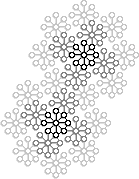
Why subscribe to G-WAN?
Why subscribe to a G-WAN Support Plan?
Top ten reasons to use G-WAN
The middleware dilemma
A better software model: “Meritware”
1
Increased power, choice and control
2
An enterprise platform vs. a collection of components
3
Proactive security management
4
A predictable and manageable update process
5
World-class support
6
Trusted software experts
7
Long-term stability in the application infrastructure
8
Open access to source code for state of the art software
9
Extensive partner ecosystem
10
Power to influence the future of middleware
About TrustLeap
TrustLeap was founded in 2009 by the CEO of a 15-year old company headquartered in
Switzerland. In less than 4 years, G-WAN has reached a state where no other Web server or
Application server could be compared in terms of performance or features. That's what we do.
1 / 9
gwan.com